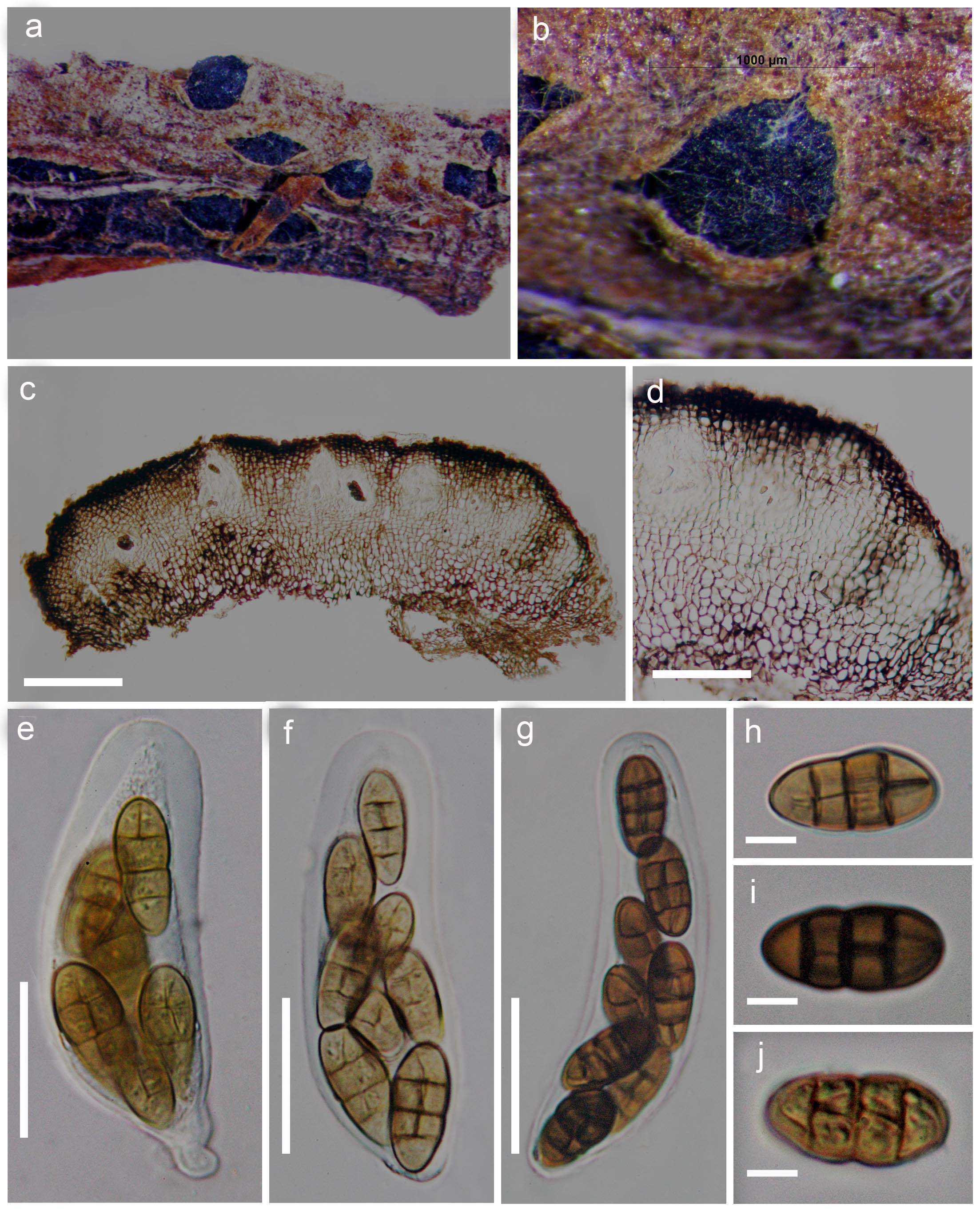Dictyodothis berberidis (Rehm) Theiss. & Syd., Annls mycol. 13(3/4): 346 (1915)
≡ Curreya berberidis Rehm, Bih. K. svenska Vetensk Akad. Handl., Afd. 3 25(no. 6): 4 (1899)
Index Fungorum number: IF 147513, MycoBank number: MB 147513, Facesoffungi number: FoF 00077
Saprobic on branches of Berberis buxifolia. Sexual state: Ascostromata 1000−1500 × 150−180 μm (x̄ = 1100 × 150 μm, n = 20), black, superficial, semi-immersed to erumpent, solitary or scattered, subglobose to broadly ellipsoid, coriaceous, multiloculate, with 8−10 locules, cells of ascostromata dark brown to black cells of textura angularis, sometimes ostiolate. Peridium of locules 20−40 (x̄ = 35 μm, n = 20) comprising lightly pigmented to light brown cells of textura angularis. Hamathecium lacks pseudoparaphyses. Asci 50−60 × 14−20 μm (x̄ = 55 × 1 7 μm, n = 20) 8-spored, bitunicate, fissitunicate, clavate to broadly clavate, with a short, broad pedicel, thickened and rounded at the apex, and an ocular chamber. Ascospores 15−20 × 6−10 μm (x̄ = 16 × 8 μm, n = 40), uniseriate or discontinuously arranged, partially overlapping, reddish brown to dark yellowish brown, muriform with three transverse septa and 1−2 vertical septum in the central cells when mature, constricted at the septa, oblong, smooth to verruculose, without a sheath. Asexual state: Unknown.
Material examined − SOUTH AMERICA, Pantagonia, Rio Argopardo, on dead wood of Berberis buxifolia Lam. (Berberidaceae), 4 March 1896, Dunsen (W, holotype).
Fig. 1. Dictyodothis berberidis (holotype). a. Ascostromata on the host surface. b. Close-up of ascostroma c. Section through ascostroma. d. Close-up of the cells of the ascostroma. e-g. Asci with a short, broad pedicel bearing 8 ascospores. h-k Reddish brown to dark yellowish brown, muriform ascospores. Scale bars: c = 500 μm, d = 100 μm, e-g = 20 μm, h-k = 5 μm.

